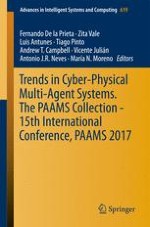PAAMS, the International Conference on Practical Applications of Agents and Multi-Agent Systems is an evolution of the International Workshop on Practical Applications of Agents and Multi-Agent Systems. PAAMS is an international yearly tribune to present, to discuss, and to disseminate the latest developments and the most important outcomes related to real-world applications. It provides a unique opportunity to bring multi-disciplinary experts, academics and practitioners together to exchange their experience in the development of Agents and Multi-Agent Systems.
This volume presents the papers that have been accepted for the 2017 in the special sessions: Agent-Based Social Simulation, Modelling and Big-Data Analytics (ABM); Advances on Demand Response and Renewable Energy Sources in Agent Based Smart Grids (ADRESS); Agents and Mobile Devices (AM); Computer vision in Multi-Agent Robotics (RV); Persuasive Technologies (PT); Web and Social Media Mining (WASMM). The volume also includes the papers accepted for publication in the Doctoral Consortium (DCAI, DCAI-DECON, ISAMI, MIS4TEL, PAAMS, PACBB 2017 conferences).
